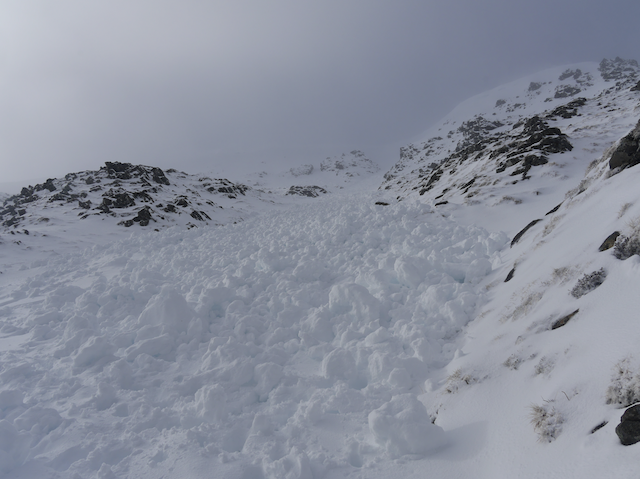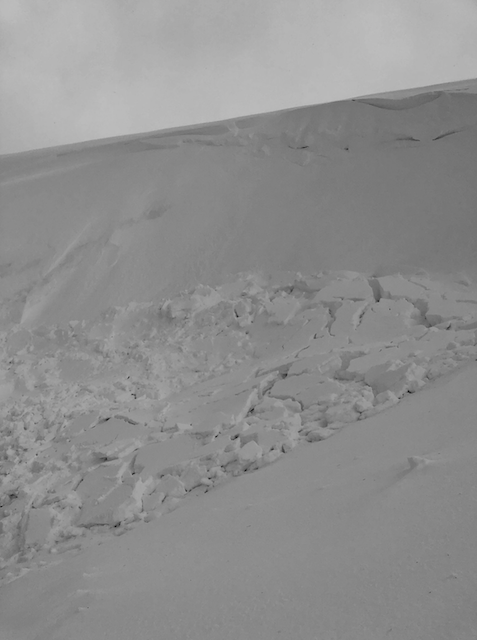Your Winter Journey
Group heading towards the summit of Glas Maol.
Once you’ve got an understanding of the forecast ground and weather conditions, taken into consideration your party’s capabilities and kit and have plotted an appropriate route then you’re ready to head out on your winter journey! For more information on How to Plan a Safe Day Out in Winter this then please refer to our previous blog.
Forecasts are to be used as a guide for what to expect and thus on your journey, you should constantly be thinking about whether the conditions that you’re experiencing match up to what you’re expecting. This process starts from leaving your front door – is it warmer than you were expecting? is there a foot of snow to clear from the driveway? how much snow is on the hills when you’re driving to the carpark? is the visibility less than what you expected? etc etc. If these conditions don’t match up then do you have a plan b, c, d?
In this blog, we’ll highlight some considerations on the day of your winter journey. The below structure is taken from the Be Avalanche Aware process used by the Scottish Avalanche Information Service (SAIS). This is an invaluable resource when planning your winter day out. More information can be found here: SAIS - Be Avalanche Aware.
Weather and Conditions
Visibility
In poor visibility, it’ll be difficult to see the route ahead of you and make observations on potential hazards like areas of windslab and cornices.
Consider safer terrain features like ridges and wind scoured-slopes.
The Fiacaill Ridge, Northern Cairngorms - travel may be easier and avalanche hazard might be smaller on the wind-scoured part of the ridge.
Avalanche activity
Is there evidence of avalanche activity, a sure sign of an unstable snowpack.
Note aspect of avalanche and avoid similar aspects.
A likely cornice collapse (left) and a human-triggered windslab avalanche (right).
Left image was taken from SAIS Creag Meagaidh Blog and the right from SAIS Northern Cairngorms Blog. © Scottish Avalanche Information Service 2024.
How Windy?
Is snow moving around at your feet or on ridges etc? This can indicate build up of unstable snow in relevant aspects and terrain.
Note aspects where new snow’s accumulating.
Sastrugi - sand dune like formations which are evidence of transportation of snow in the wind.
Snowpack Cracks Underfoot
Small or large cracks appearing at your feet or whomping noise are signs of unstable snow.
Note aspects where this is occurring.
Monitor snowpack behavior throughtout day
A crack appearing in the snowpack, a sure sign of instability.
Image taken from SAIS Creag Meagaidh Blog. © Scottish Avalanche Information Service 2024.
Cold or Warm
Consistent low temperatures preserve snowpack instabilities. Warm temperatures and rain at summit levels can produce rapid instabilities.
You and Your Party
Poor Visibility
Select appropriate objective based on your navigational capabilities.
Can you plot a bearing? Can you use timing and pacing to navigate in poor visibility?
Equipment and Clothing
Do you have the right clothing and equipment and know how to use it?
Other considerations
Are you and your party coping well? Are you moving quickly enough to achieve your objective? Are you heading into remote terrain? Are fitness levels sufficient?
Mountain Landscape
Unstable Slopes
Can you see your proposed route crosses unstable terrain or are you uncertain?
Be aware of collapsing cornices and/or people above you triggering an avalanche.
A cornice on steep terrain in the Cairngorms.
What’s happening around you?
Keep an eye on snow distribution, it constantly changes, especially on windy days.
Complex Terrain
This will require good navigation and experience, especially in poor visibility.
Complex terrain above Strath Nethy.
Summary
Conditions are constantly evolving when you’re out on the hill in the winter. The preparation that you do before-hand is the foundation and is to be used as a guide as to what to expect on your proposed route. Make sure that you have a number of alternatives in case conditions don’t match your expectations and party’s capabilities.
If you’re interested in finding out more then please get in touch or click here to book onto one of our Winter Skills courses!
Written by Edd Hamilton









